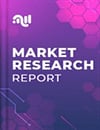Global Chemotherapy-Induced Acral Erythema Treatment Market By Product (Analgesics, Anti-inflammatory & Anti-edematous Agents, Antihistaminic, Nonsteroidal Anti-Inflammatory Drugs (NSAIDs), Oral/Topical Glucocorticoids, Pyridoxine (Vitamin B6), Cold Compression Therapy), By Distribution Channels (Pharmacy & Drugstores, Hospital Pharmacies, Online Drug Stores), By Region, and Key Companies - Industry Segment Outlook, Market Assessment, Competition Scenario, Trends and Forecast 2021-2031
- Published date: March 2023
- Report ID: 73929
- Number of Pages: 303
- Format:
- keyboard_arrow_up
Acral erythema, also known as a Hand-foot Syndrome (HFS) or palmar-plantar erythrodysesthesia, is characterized by swelling, redness, paraesthesia (numbness), and desquamation (skin peeling) of the palms, soles, and, on rare occasions, the knees and elbows. Acryl erythema is a type of adverse medication reaction that occurs after several months of therapy with chemotherapeutic medicines, the most prevalent of which are gemcitabine and fluorouracil.
Chemotherapy-induced acryl erythema is a dose-dependent condition that can be treated by stopping chemotherapy or reducing the dosage. Symptomatic treatment with analgesics and antihistaminic medications to minimize pain, and edema is used to treat chemotherapy-induced acryl erythema.
According to the National Center for Biotechnology Information (NCBI), patients treated with capecitabine have a 60% chance of developing HFS.
On September 20, 2020, the Central National Investigations Oncology (CNIO) identified genetic variables linked to HFS in capecitabine chemotherapy.
Detailed Segmentation –
The global chemotherapy-induced acral erythema treatment market is segmented on the basis of – Product Types, Distribution Channels, and Region. Represented below is a detailed segmental description:
Based on Product Types:
- Analgesics
- Anti-inflammatory & Anti-edematous Agents
- Antihistaminic
- Nonsteroidal Anti-Inflammatory Drugs (NSAIDs)
- Oral/Topical Glucocorticoids
- Pyridoxine (Vitamin B6)
- Cold Compression Therapy
- Other Product Types
Based on Distribution Channels:
- Pharmacy & Drugstores
- Hospital Pharmacies
- Online Drug Stores
Based on Region
- North America
- Europe
- Asia-Pacific
- South America
- Middle East & Africa
Market Dynamics –
Drivers for the Global Chemotherapy-Induced Acral Erythema Treatment Market:
The global chemotherapy-induced acral erythema treatment market is being propelled by an increase in the use of chemotherapeutic drugs as a result of the increasing incidence rates of cancer. This factor may help to augment the revenue growth of the global chemotherapy-induced acral erythema treatment market in the years to come.
According to the World Health Organization (WHO) cancer factsheet 2015, the global prevalence of cancer is anticipated to increase by 70% over the next two decades, which may have an positive impact on the economic growth of the global chemotherapy-induced acral erythema treatment market.
Competitive Landscape –
Key players in this market are –
- Taro Pharmaceutical Industries Ltd.
- Oceanside Pharmaceuticals Inc.
- Pfizer
- Novartis AG
- A-S Medication Solutions LLC.
- Preferred Pharmaceuticals Inc.
- Syntex Pharmaceuticals Inc.
- Valeant Canada LP
- Technilab Pharma Inc.
- Allergan Plc.
- others
These key industry players are now focusing on mergers, partnerships, acquisitions, product developments, and collaboration strategies, in order to sustain their respective competitive edge.
For the Chemotherapy-Induced Acral Erythema Treatment Market research study, the following years have been considered to estimate the market size:
Particular Scope Region - North America
- Europe
- Asia Pacific
- Latin America
- Middle East and Africa
Historic Year 2016 to 2020 Estimated Year 2022 Forecast Year 2023 to 2032  Chemotherapy-Induced Acral Erythema Treatment MarketPublished date: March 2023add_shopping_cartBuy Now get_appDownload Sample
Chemotherapy-Induced Acral Erythema Treatment MarketPublished date: March 2023add_shopping_cartBuy Now get_appDownload Sample - Taro Pharmaceutical Industries Ltd.
- Oceanside Pharmaceuticals Inc.
- Pfizer Inc Company Profile
- Novartis AG Company Profile
- A-S Medication Solutions LLC.
- Preferred Pharmaceuticals Inc.
- Syntex Pharmaceuticals Inc.
- Valeant Canada LP
- Technilab Pharma Inc.
- Allergan Plc.
- others
- settingsSettings
Our Clients
| Single User $4,599 $3,499 USD / per unit save 24% | Multi User $5,999 $4,299 USD / per unit save 28% | Corporate User $7,299 $4,999 USD / per unit save 32% | |
|---|---|---|---|
| e-Access | |||
| Report Library Access | |||
| Data Set (Excel) | |||
| Company Profile Library Access | |||
| Interactive Dashboard | |||
| Free Custumization | No | up to 10 hrs work | up to 30 hrs work |
| Accessibility | 1 User | 2-5 User | Unlimited |
| Analyst Support | up to 20 hrs | up to 40 hrs | up to 50 hrs |
| Benefit | Up to 20% off on next purchase | Up to 25% off on next purchase | Up to 30% off on next purchase |
| Buy Now ($ 3,499) | Buy Now ($ 4,299) | Buy Now ($ 4,999) |









